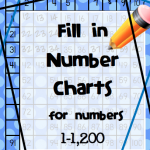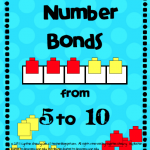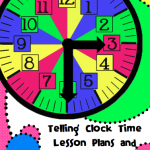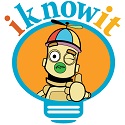Why Won’t My Students STOP TALKING??!!
What do you do when your students talk too much? I know it drives you insane! Is there a way to curb this behavior without taking away a privilege from everyone–moving clips, taking away Dojo Points etc.?
I’m going to share with you what works for me. First I start out the year with an anchor chart like the one pictured here.

I review each of the five items on the chart. I have students practice acting like each of the five expectations on the chart. For example, I have them read the expectations with me. When we read number three I have the students whisper in their teams. When we read number four I have them practice using low voices in teams. We talk about how students’ bodies look when students are using soft voices–how their bodies are close together. I even have children practice raising their hands to ask a question. We discuss how a child waits to be called on before making any noise, how students don’t get called on when making “ooh, ooh, monkey noises” etc.
Now, what happens if children are talking too loudly while working? After I have given them a warning or two about the class volume, I have found this to be a simple solution. “Students, you have been talking too loudly. Because of this, we are going to sit in absolute silence for one minute. If after one minute no one has made a sound, you will be able to talk again in low voices. During that minute if one person makes a sound–even a whisper–I will start the one minute over.”
I hold to what I said, and the noise magically lowers. Sometimes it seems that children just needed a break from their conversation and noise level to readjust their volume. I hope these tips help you. It is never too late in the year to establish your expectations. Don’t give up if you are struggling with a talkative class. 🙂
Use This New, Free, Quick, and Easy Classroom Management Tool
If you haven’t already heard of Class Dojo, a cutting edge classroom management tool, let me fill you in.
Our fourth and fifth grade teachers are using it and they absolutely L-O-V-E it!! Class Dojo is a website which allows you to load all of your students and keep up with their behaviors, positive or negative, based on a point system. You can upload the behaviors you want that match your classroom rules and expectations. For example, you can include behaviors such as “off task”, “participating”, “showing respect” etc. The entire system is on a website and/or it can be used as an app on an ipad or iphone (and android).
 The marvelous thing about this is there is no walking over to a behavior chart to change a card or clip etc. You can carry the ipad around with you and immediately respond to behaviors. Then when you want to reward or use a consequence, you simply click/touch the child’s name. Each child has a cute colorful avatar beside their name.
The marvelous thing about this is there is no walking over to a behavior chart to change a card or clip etc. You can carry the ipad around with you and immediately respond to behaviors. Then when you want to reward or use a consequence, you simply click/touch the child’s name. Each child has a cute colorful avatar beside their name.
They also have a little red bubble that shows their points accumulated. Students avatars can be projected onto a screen or smart board so that they can see their avatars and points. A whole classroom can be given a point at one time too–say for example all of the students walked quietly in the hall or all students were working hard on an assignment. I also really like the “random” button. You can push the random button and different names will flash on the screen until the program finally lands on one name. Then when it stops on that one name, you can look to see if that student is using appropriate behavior and record his/her point accordingly. This especially keeps the kids sitting up straight if the names are projected on a screen.
 What’s even better is that there can be instant parent communication. Parents can have a code to view their child’s behavior and see how they are behaving. Students can even change and decorate their avatar to look like they want it to. The best part about Class Dojo–it is totally FREE!!
What’s even better is that there can be instant parent communication. Parents can have a code to view their child’s behavior and see how they are behaving. Students can even change and decorate their avatar to look like they want it to. The best part about Class Dojo–it is totally FREE!!
Even Some Veteran Teachers Haven’t Considered Teaching Procedures In This Depth…
Do you know a teacher who has his or her classroom very well behaved no matter what crop of children they receive? Nearly every child is following directions in these classrooms for the majority of the school year. You could walk into these classrooms later in the year and wonder what their secret is. The secret lies in the first few days and weeks of school. The first few days of school are SO crucial. If a teacher allows and ignores whispering in the hallway now, then students will be yelling in the hallway by Christmas. You must “nip it in the bud” my college professor once told me. If students don’t do EXACTLY what you want the first few days of school, you must make them practice it over and over again until you get EXACTLY the behaviors you desire.
I was so proud of my novice teacher today! I mean smiling 1000 watt smile with all of my teeth showing on the inside. I had a long talk with her on the phone before our first day of school. I reminded her to practice every single procedure until she got the desired behavior she was looking for. I also told her to be specific about every detail when she explained each procedure.
In our conversation I said “Remember every behavior that got on your nerves last year,”.
She said, “mhum.”
I posed this question to her, “What happens when your rule is “STAY IN YOUR SEATS” and a child drops his or her crayons box? All of the students’ eyes follow the spewing of crayons while you are teaching. About six little feet patter across the floor to “help” the poor student who has just dropped the entire contents of his precious school box. You stand there not knowing whether to warn these “helpers” since they were only “helping” or thank them because they were assisting their peers.”
To hold students accountable for every action, a great teacher has foreseen the inevitable behavior of children and will address these actions before they happen. If a situation arises that hasn’t been addressed, the teacher will make a learning experience from it.
So, the reason for my 1000 watt smile : D is that my novice teacher was doing all of these things exactly like we discussed. As I walked in her room today I was so impressed of how she was having her students practice every procedure until they mastered it to her standards! She quickly dished out consequences for inappropriate behavior, and all children were attentive! I could take veteran teachers in her room into learn from such a model classroom! BRAVO!
Use Rubrics Even In Your Classroom Management
Because rubrics are such a large part of our state testing, I decided to include a rubric with my behavior management card system. On our state testing a 4 is Advanced, 3 is Proficient, 2 is Basic, 1 is Below Basic, and 0 is an irrelevant response. To emulate the state testing rubric I made each card on my behavior system equal to a 4, 3, 2, 1, or 0. Students receive a score at the end of the week out of a total point value of 20. Students are allotted 4 points a day which equals 2o points for a 5 day week. If students get at least 18 out of 20 points, they receive a special treat on Friday. On Friday, I communicate students total score on a parent communication page attached to students’ weekly graded work. See the chart system in picture form below.
When You See Struggling Learners, Keep This In Mind…
I came across an article by Ross Miller of Association of American Colleges and Universities yesterday, and it reminded me of how important it is to have high expectations for children. In this article it states that students may have equal abilities, but the student who is expected to achieve more will perform more highly. Teachers tend to attribute poor performance from a higher achieving student to bad luck while a low achieving student’s poor performance will be attributed to lack of ability. Americans tend to link ability and performance with little thought of student effort. Teachers in the U.S. tend to see low ability as something that is immutable. Contrastingly, Japanese and Chinese teachers attribute students’ learning more to the teaching received and to students’ effort. Since China and Japan tend to dominate the world in achievement, we could definitely learn from their high expectations of ALL students’ success.
Welcome Children to a Classroom with High Expectations
I have always been a big fan of Greater Expectations–a way of instilling high expectations in your classroom with positive statements, cheers, proverbs, and songs etc. From this workshop about ten years ago I got the following words for the posters shown below. Every year I place these poems outside my door so that students can see them when they enter. I make reference to the posters often to let students know how bright they are and that I believe in their ability to succeed.
33 Classroom Procedures to Consider before School Begins

- How will students obtain a sharpened pencil?
- How will students line up?
- How will students take turns going to the bathroom?
- What will students do while waiting in line?
- How will students prepare when going home?
- How will students turn in homework?
- How will students communicate with parents?
- How will you record behavior?
- How will students work in centers?
- How will students work in groups?
- How will you get your students’ attention when they are doing an activity?
- How will students handle manipulatives appropriately?
- How will students turn in their work?
- How will students label their papers?
- What will students do when they arrive at school?
- Where will students place their backpacks and personal items.
- How will students sit appropriately when you are talking?
- How will students show you they are listening?
- How will students sit on the carpet?
- How will your rewards/consequences system work? What are the students’ responsibilities?
- How will students solve a disagreement?
- What will students do when they have a question?
- What will students do when they need to use the restroom?
- What will students do when they are tardy?
- What will students do when they are absent for missed assignments?
- What will students do with communication (notes etc.) from parents?
- What will students do if they are sick?
- How will students travel in the room?
- How will students address the teacher and other adults?
- How will students answer the door?
- How will students act when there is a visitor in the room?
- How will students use their voices when working in different situations (testing, cooperative groups, independent work).
- What will students do when another student is bothering them or bullying them?
Use This Festive Tool to Motivate Students Toward Goals
Are your students working towards mastery of their multiplication facts? their AR goal? or maybe some other goal? When your students in class are working towards a goal, use a string of large C9 Christmas lights to represent each child. Label student names on each bulb with a Sharpie marker. Unscrew the bulb so that it won’t light up until the child has reached the goal. When a child reaches his/her goal, then screw in the bulb so that it lights up. Eventually the whole string will be lit when all of the children reach their goals!
Do Manipulatives Make too Much Noise in Your Class?
Clink, Clank times twenty-five students can create a deafening noise in combination with twenty- five low voices, so try this to quieten your classroom. There is the obvious use of the less durable, new foam manipulatives. Then there is the option of giving every student a sheet of felt to soften the noise of plastic or wood manipulatives. However, if you use felt, it has a tendency to slide around too much on students desks. Recently a fourth grade teacher shared an idea with me which I had never thought of…use the foamy-type liner (without the peel off sticky backing) that you buy to line your kitchen cabinets. Cut each student a rectangle to use for their desk. This type of contact paper doesn’t slide!



































